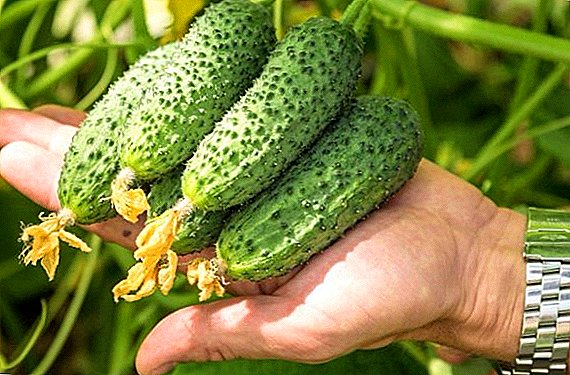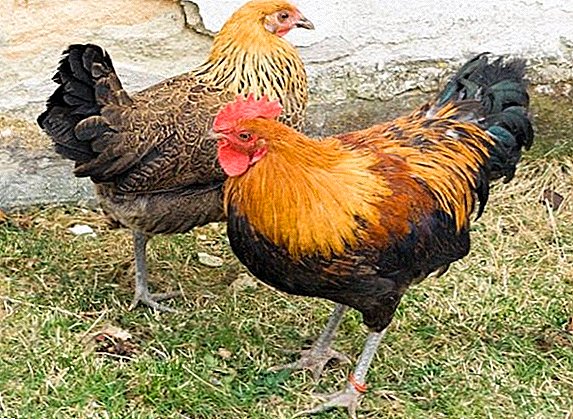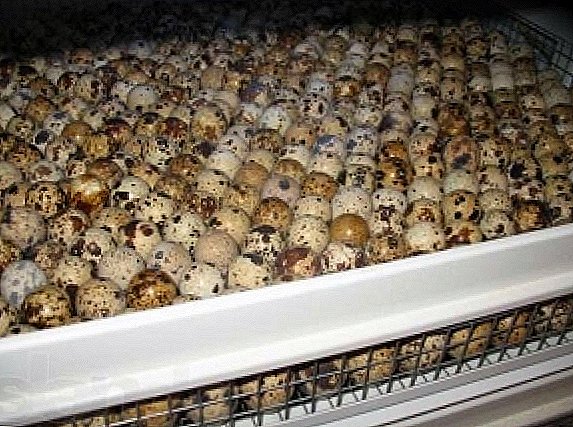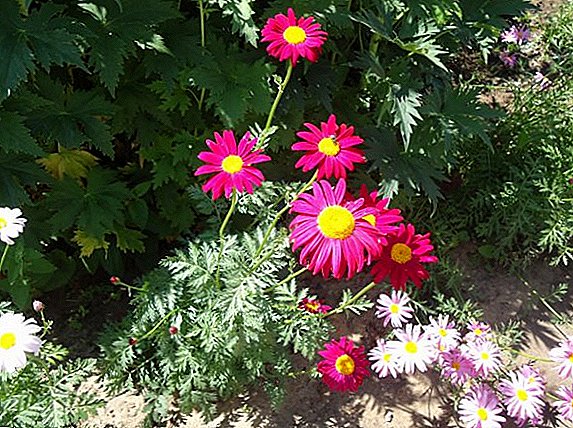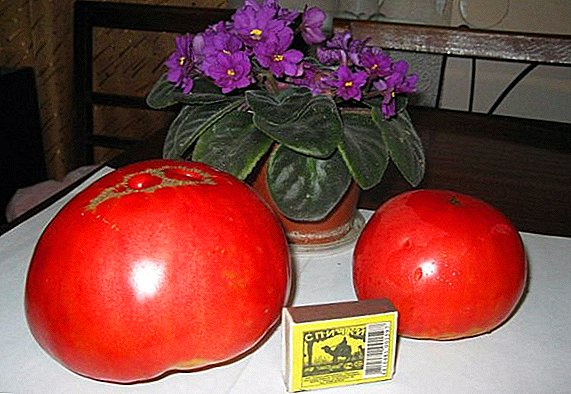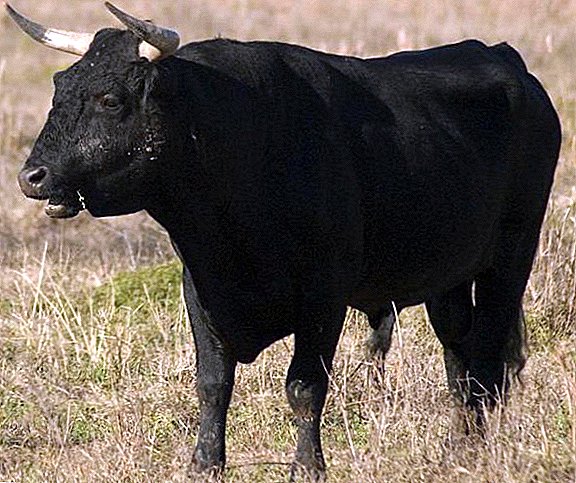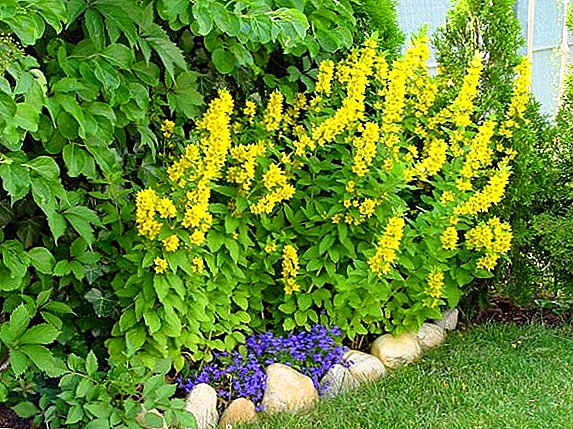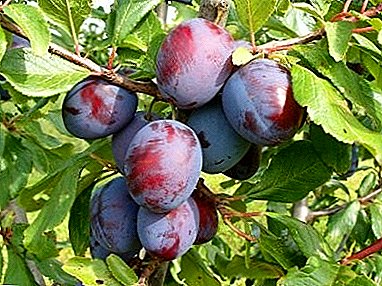
To say exactly how many varieties of plums currently exist is almost impossible. It is only known that the plum was never a wild tree.
It appeared as a result of natural hybridization of cherry plum and thorns in the Caucasus. Since then, it has been actively distributed everywhere.
Many varieties are bred by experienced breeders. One of their creations is the "Zarechnaya early" plum.
Breeding history
All-Russian Research Institute of Genetics and Breeding of Fruit Plants. I.V. Michurin made the originator of this variety. The author G. A. Kursakov worked on its creation. The grade passed all tests and was entered into the state register in 1988. Zoned throughout the Central Black Earth territory.
Description varieties Zarechnaya early
 Tree srednerosly. The crown is not strongly thickened, with weak foliage, in form resembling a ball.
Tree srednerosly. The crown is not strongly thickened, with weak foliage, in form resembling a ball.
On the crown, gray lentils of small size are strongly noticeable. Medium buds, slightly tapering at the ends, weakness of the shoots to the shoots.
Sheet size is above averageWith a matte finish, deep green.
Oval sheet plate in shape with a pointed tip, almost flat. The surface of the sheet is leathery, smooth.
The glands are red, very small, 1-2 on the leaf stalk. Stalk durable, thick, medium length, often with pigmentation. Petals in flowers are white, medium, in contact with each other.
The stamens are much shorter than the pistil. When flowers are in bud stage, they are green. The calyx of the flower is bell-shaped, greenish.
A photo
Visually with the plum variety "Zarechnaya early" can be found in the photo below:





Features of the fruit
A distinctive feature of the variety is dark purple fruitswhich are covered with a waxy coating. Large plum size, from 40 g to 50 g. The shape of the plum is round or oval-round. Subcutaneous points and abdominal sutures are highly visible on the surface of the fetus.
Other varieties of plums with large fruits are Firefly, Hungarian Korneevskaya, Renklod Soviet, Starting, Bolkhovchanka.
The fruits have a pleasant taste with a slight sourness. Pulp is dense, transparent yellow color. In terms of its structure, it is very juicy and tender, which was rated at a tasting of 4.5 points. Variety refers to the table-technical.
Chemical composition:
- Dry matter - 16.83%;
- Sugar - 7.84%;
- Acid - 1.57%;
- Ascorbic acid - 3.5 mg / 100g;
- P-active substances - 200 mg / 100g.
Specifications
The yield of this variety is very good.. The tree after planting begins to bear fruit for 3-4 years. The appearance of the fruit begins early, by the end of July. With each subsequent year there is an increase in yield.
High frost resistance like wood and kidney. Very unpretentious, soil tolerates any. Only a very heavy clay soil can provoke a slight freezing of the roots, which will subsequently affect the yield.
The separability of the bone from the pulp is very goodthat allows you to use the fruit in cooking and canning.
REFERENCE! The fruits have excellent transportability and keeping quality, but for this they need to be removed from the branch 5-6 days ahead of time.
Landing
 With all the unpretentiousness of the plum tree, the sapling should be planted in the region for which the variety has been zoned. This will ensure the best results in the future.
With all the unpretentiousness of the plum tree, the sapling should be planted in the region for which the variety has been zoned. This will ensure the best results in the future.
Plum loves the sun and space. Even with a slight shade of its fruit shallow, and the leaves turn yellow. Therefore, a place to land should be chosen in accordance with these requirements.
This culture also can not stand the wind. Strong gusts of wind can blow the flowers, and thus deprive half of the crop.
Better place for landing it is next to a wall of a house or fence. It is also not suitable to plant a plum in the lowlands, in order to avoid the accumulation of cold air.
The most favorable growth environment is considered sandy and light porous loamy soil. The groundwater level should not be less than 2 meters from the ground. Otherwise, you can make small grooves to drain excess water.
REFERENCE! If sand or clay is deposited in the lower layers of the soil, then you should not plant a plum on this ground.
Since the "Zarechnaya Early" is a medium-growth tree, the distance between buildings or neighboring trees must be at least 4 meters.
Considering that the variety is zoned for the Black Soil Region, Both fall and spring can be a favorable time for planting.. Pit for planting a tree should be prepared in advance for 2-3 weeks. This is done in order to make organic mineral fertilizers have time to settle.
The depth of the pit 60 cm, the diameter is the same. Before planting a tree in the middle of the pit, it is necessary to drive a stake, at an approximate distance from a seedling of 15 cm.
Main landing rules:
- the pit is filled with soil only, without additional fertilization;
- root neck should be at least 2-5 cm above the ground;
- after planting a small trench is made around the tree for efficient watering.
Care
 After the tree has been planted it must be watered well. Three buckets - the optimal amount for one tree.
After the tree has been planted it must be watered well. Three buckets - the optimal amount for one tree.
After two weeks, watering needs to be repeated. The exception is landing in the spring. Given the high soil moisture after melting snow, watering can be more moderate.
To keep the quality of the fruit at the proper level, need to monitor the growth of shootswhich grows very actively in plums.
Remove unwanted otvodki need several times a month. Remove diseased and dry branches, as well as regulate the distance between the fruits, which should be at least 7 cm.
IMPORTANT! In order to adjust the frequency of fruiting, agronomists advise thinning the branches of the tree in the fruitful year.
To prevent the branches from breaking under the weight of the fruit, plums need special supports supporting heavy branches. When choosing a backup, it is important to eliminate friction between the bark. To avoid this, a rag or rubber should be placed at the point of contact.
In the feeding the first years after planting the tree has no need. It is only necessary to water regularly. Watering is carried out once in 7-10 days. In the third year of the life of a young tree, one should begin apply various fertilizers according to this schedule:
- May - 2 tbsp. l urea per 10 liters of water
- June - 3 tbsp. l nitrophoska for 10 liters of water,
- August - 2 tbsp. l superphosphate 10 liters of water.
Pruning
Plum does not have a natural tendency to the natural formation of the crown, therefore, especially in need of pruning. Usually, dry, diseased, as well as excess branches that prevent access of sunlight are removed. Pruning is carried out in the fall or spring before the start of sap flow.
REFERENCE! The greatest benefit will be the removal of one large branch than a few small ones.
 When pruning, the length of the tree and trunk must be adjusted.
When pruning, the length of the tree and trunk must be adjusted.
It is noticed that the care of compact trees is much easier than for tall ones. They have better yields, and they endure severe frosts more easily.
From small trees it is easier to harvest and sunlight penetrates to each branch.
Diseases and pests
"Zarechnaya early" variety is fairly disease resistant and is rarely subject to pest invasion. But preventive measures are still worth observing.
The most common diseases of plum are: bushiness, bloom, moniliosis, gommoz, coccomycosis, rust, scab.
Pests affecting plum: hawthorn, fruit mite, plant louse, plum moth, silkworm ringed.
For the prevention of disease The following actions are recommended:
- Regular inspection of the tree for diseases.
- Timely cleaning and burning of fallen leaves under a tree.
- Careful removal of weeds in the circle wheel.
- Spraying the tree in early spring with 3% Bordeaux mixture.
Prevention of tree damage various parasites:
- Removal of weeds and fallen leaves.
- Digging in the fall of the soil in pristvolnom circle.
- Putting limy whitewashing on a trunk.
- Spraying wood with special tools in early spring.
The “Zarechnaya Early” plum is a very unpretentious, frost-resistant and easy-care variety. Its attractive fruits and lack of deficiencies make the variety more and more popular among gardeners.


